We were so excited to pass over the Mississippi River, because it meant we were heading “West” at last, making us feel that our adventure was back on track. Soon after crossing the Mississippi on I-10, we were awed by the Atchafalaya Basin Bridge. Now, we have been impressed by the 7 mile bridge in the Florida Keys many times (35,862 feet), but the Atchafalaya puts that one to shame at 96,100 feet long, and it is only the third longest in bridge Louisiana. It passes over the largest swamp in the United States, and per Wikipedia, has 260,000 acres of iconic cypress-tupelo swamps, the largest remaining contiguous tract of coastal cypress in the US.
Since we checked into our camp site a few hours early, we decided to drive to Cameron Prairie National Wildlife Refuge to scope out where we would be birding the next day. On the way we saw HUNDREDS of Brown-headed Cowbirds hanging out at a grain loading site. Smart birds! Cameron Prairie NWR is set up much like St. Marks National Wildlife Refuge, with dike systems controlling water flows for different parts of the refuge, but of course it has many different species of birds than are found in Florida. In that quick pre-visit, were able to add 4 new species including the Greater White-fronted Goose and Snow Goose, to be followed by 4 new species on the day of our scheduled visit. If you have never seen a Cinnamon Teal
(we hadn’t) you are missing a beautiful site- no picture (even this excellent one taken by Chuck) could do it justice.
Rutherford Beach, LA is an interesting Coastal Plain where the effects of Hurricanes Rita (2005) followed by Hurricane Ike (2008) linger leaving a great deal of undeveloped private land; unheard of on Florida’s Coastline. Here we found a Western Grebe, confirmed by Dr. J.V. Remsen, which caused a tiny birder fuss which is typical in the birder community. When a bird is seen out of its typical area, or at a time not expected for an area, word is sent out to other birders so that they can get out to see it too.
As for camping in Louisiana, in the future, we will try to drive straight through the state. This is yet another state that just doesn’t compare to Florida in facilities, in supervision of the campers, or in resource management of the park. We were even encouraged to gather firewood (called habitat for many species in enlightened state parks).
Altogether, in our two days in Louisiana, we were able to add 12 new species. Pretty exciting.
On our way to our first birding spot in Texas, on a corner in front of a pawn shop, we saw and finally added to our Big Year list… the House Sparrow. Lame I will admit, but we don’t seem to pay attention to birds unless we are in or near woods. Getting to Atwater Prairie Chicken National Wildlife Refuge, GPS driving directions took us to the wrong entrance on a brisk cold morning. We worked the periphery of the refuge from inside our nice warm van (thank goodness the Sprinter has such a wonderful view) finding our target birds in spite of being in the wrong place and without even getting out of the car.
On the way to Laguna Atascosa National Wildlife Refuge, we were able to compare the calls of the Eastern and Western Meadow Larks, two birds which are almost impossible to distinguish by sight. The mnemonic description of an Eastern’s call is said to be “Spring of The Year”, and I would suggest that the Western’s sounds like “Spring of… Oh Fiddle I Forgot the Song”. At the refuge we found ourselves like children in a candy store whose only limit is the size of their stomachs. Walking up to the Visitor Center we were overwhelmed by a raucous cacophony of bird calls, sounds, and views of birds all unlike anything we have seen in the East. Green Jay’s, Long Billed Thrashers, Plain Chachalaca, Great Tailed Grackles, all attacking our senses.
On our first day at this refuge, we were able to add 13 new birds, and because we discovered that there is a Habitat Tour which takes folks into Ocelot habitat now closed to the general public, we chose to come again the next day. Sadly, the tour guide provided us a constant and non-stop drone of stream of consciousness drivel having little to do with the ecological habitat.
Only the beauty of the area, and the saving grace of the driver (an intern), who occasionally interjected (on the few occasions that the guide paused for breath) to correct him with actual facts, made the trip worthwhile. So I advise finding out who will be leading your group before you invest the 3 hours. We were able to add a total of 22 species in the Laguna Atascosa area, including the Aplomodo Falcon, as well as the Grove Billed Ani and a Screech Owl both of which another helpful birder put us onto.
Before heading further inland, we took one last trip in the Eastern part of Texas, this one to the Audubon Sable Palm Sanctuary. Winds were ridiculous, gusting from 25-30 miles an hour, making birding quite challenging. This is a unique place, as all Audubon sites seem to be, but adding to the uniqueness of the experience was the fact that we had to cross the US Mexican border fence to get there. HOLY COW! We have heard of it, read of it, and even seen pictures of it, but seeing it in person truly puts the border in a different perspective. The amount of money expended on right of way purchase, fence material and labor, cost of the road construction and maintenance as it runs alongside the length of the border fence, the electronic monitoring of the border, as well as the ongoing border patrol police and their vehicles etc. must be enormous. In spite of all the human absurdity, once we crossed over, we found ourselves inside a heavenly place. And although the sanctuary was actually still inside the United States, I did receive a cell phone message from Verizon stating “Welcome to Mexico”. Here we added the Least Grebe
the Curve-Billed Thrasher, and the stunning Green Kingfisher
At this point, we feel like we have hit the pinnacle of our birding year, yet given the balance of our itinerary, target birds and their ecosystems, we know that this was only one of many high points.
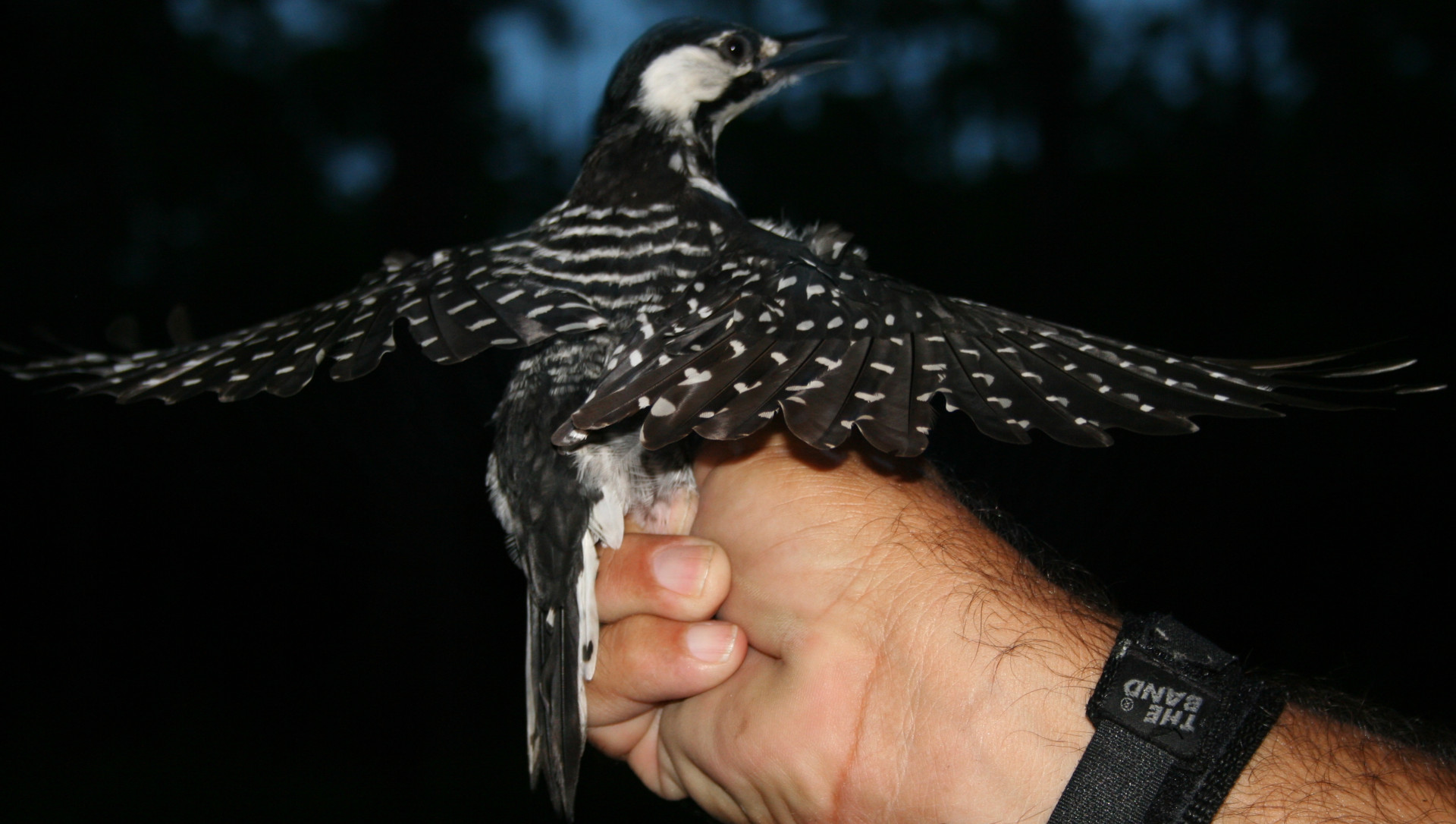
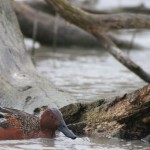

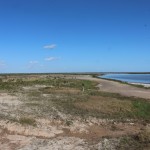
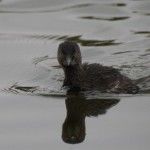
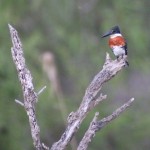
Awesome… again! Thanks so much for posting Carrie’s entertaining commentary and Chuck’s amazing photos. Tom and I are thoroughly enjoying your Big Year!